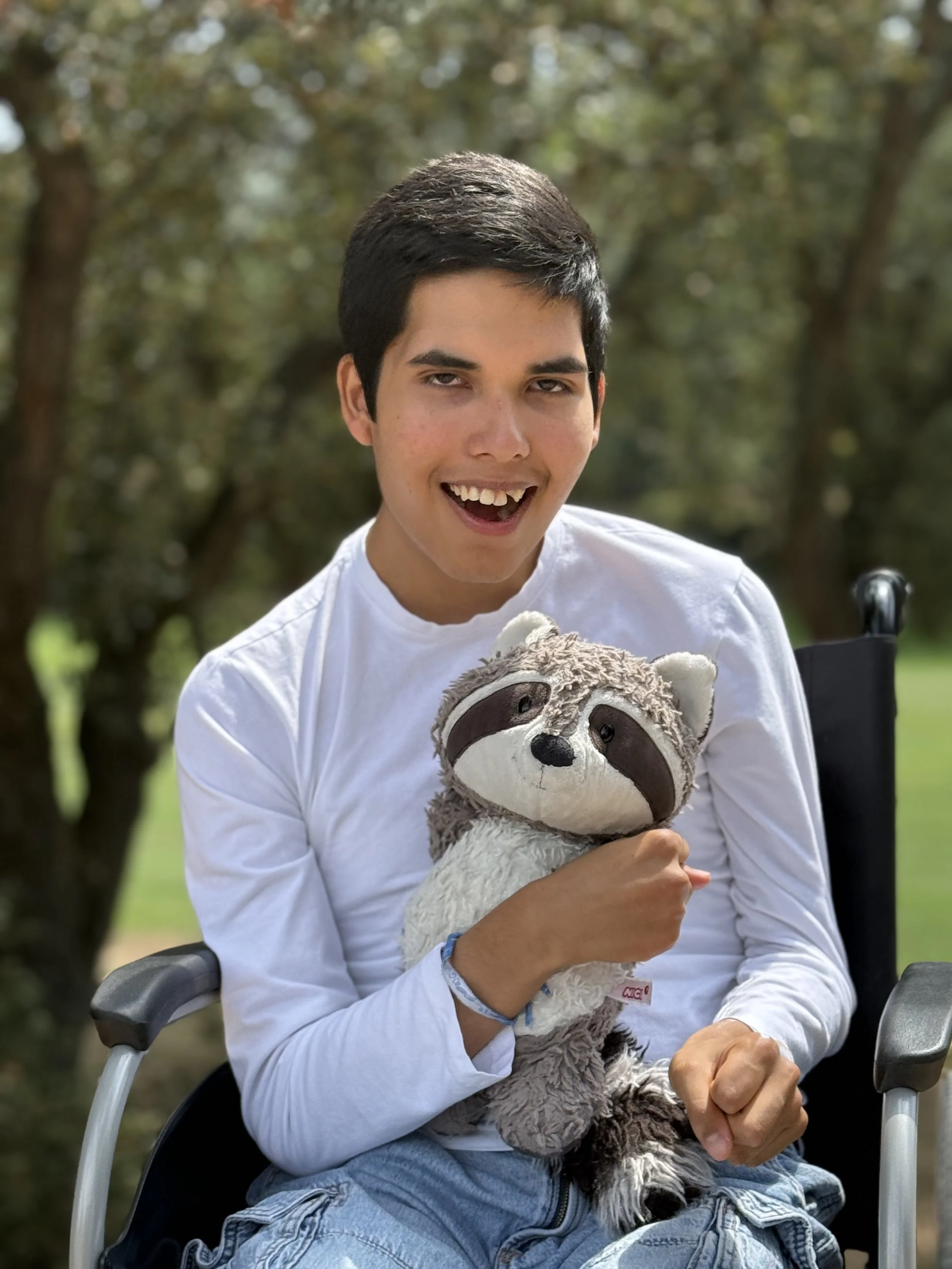
Spinocerebellar Ataxia (SCA)
What is Spinocerebellar Ataxia (SCA)?
Spinocerebellar ataxia, or SCA, is a rare, inherited neurological condition that affects the brain’s ability to control movement and coordination. The name comes from the parts of the nervous system it impacts:
Spino – the spinal cord
Cerebellar – the cerebellum, the part of the brain that helps with balance, movement, and coordination
Ataxia – a medical term for problems with coordination and balance
The cerebellum acts like the body’s “control center” for walking, holding objects, speaking clearly, and performing precise movements. In SCA, this control center gradually loses its ability to send smooth, coordinated messages to the muscles.
Types of SCA
There are more than 40 known types of SCA, each caused by different genetic changes. SCA Type 2 (SCA2), — the type Sebastian lives with — is one of the more common inherited forms. While the symptoms vary, SCA2 often causes problems with movement, coordination, and speech, and may also affect vision and swallowing as it progresses.
Early Signs & Symptoms
SCA can appear at almost any age, but for many, early symptoms start in adolescence or adulthood. Possible early signs include:
Frequent loss of balance or unsteady walking (gait instability)
Difficulty with tasks requiring fine motor skills, like writing or buttoning clothes
Slurred or slowed speech
Hand tremors or uncoordinated movements
Eye movement changes, such as difficulty focusing or rapid, jerky eye motions (nystagmus)
Fatigue or muscle stiffness
These signs may appear gradually and can sometimes be mistaken for clumsiness or fatigue, which is why early recognition is important.
Because SCA shares symptoms with other neurological conditions, a diagnosis typically involves several steps:
Medical & Family History – A neurologist will ask about symptoms, onset, and whether there’s a family history of ataxia or similar conditions.
Neurological Examination – To check balance, coordination, reflexes, muscle tone, and eye movements.
Imaging Tests – MRI scans can show shrinkage or changes in the cerebellum.
Genetic Testing – This is the only way to confirm the specific type of SCA. A blood test analyzes DNA for known mutations.
Additional Tests – Eye movement studies, nerve conduction tests, and speech/swallowing evaluations may also be used.
Diagnosis: How is SCA Confirmed?
Living with Spinocerebellar Ataxia (SCA) is not easy. It is a journey of acceptance, adaptation, and resilience, one where the unknown touches not only the life of the patient but also the lives of their families and caregivers. When Sebastian was first diagnosed, we quickly realized that while there was no roadmap, there were steps we could take to educate ourselves, build the right support system, and find strength in community.
One of the most important lessons we’ve learned is that you don’t walk this path alone. Because SCA is rare, families, doctors, and specialists often learn together — sharing experiences, resources, and hope along the way. Surrounding yourself with a trusted care team and seeking out supportive networks makes a tremendous difference in navigating the challenges of this condition.
While there is currently no cure for SCA, supportive therapies are essential for maintaining independence, improving quality of life, and slowing functional decline:
Physical therapy helps with balance, coordination, and strength.
Occupational therapy supports daily activities and independence.
Speech therapy assists with communication and swallowing challenges.
Equally important are emotional support and adaptive tools that can ease daily living. Finding encouragement from others who understand this journey, whether through local support groups, online communities, or organizations dedicated to ataxia, provides not only knowledge but also comfort and connection.
At Sebastian’s Hope Foundation, we know firsthand that while Ataxia reshapes life, it does not define it. With the right resources, therapies, and community, families can continue to create meaningful moments of joy, dignity, and hope.
Living with SCA
Support Toolkit
When Sebastian was first diagnosed with SCA2, one of the most important steps we took as a family was to educate ourselves and others about the condition. Knowledge gave us strength, but just as vital was finding the right support system to help us through the everyday challenges.
Whether you’re learning how to manage daily tasks as the disease progresses or searching for guidance to cope with the emotional impact of a diagnosis, please know: you are not alone — we’ve got you.
Here, we’ve gathered key organizations and specialized centers that were especially helpful at the beginning of our journey. These resources offer education, medical expertise, and community for families newly navigating SCA. And remember, you can always reach out to us directly for further guidance and connections. Take it one day at a time — and lean on the community around you!
A leading nonprofit offering membership, educational resources, webinars, patient registries, and global support networks.
A leading nonprofit offering membership, educational resources, webinars, patient registries, and global support networks.
A leading nonprofit offering membership, educational resources, webinars, patient registries, and global support networks.


